


xxxxxThe German scientist Alexander von Humboldt, together with the French botanist Aimé Bonpland, returned to Paris in 1804 after five years exploring parts of South and Central America. Covering over 6,000 miles, they returned with some 60,000 plant specimens, and a vast amount of scientific data concerning the geography, geology, meteorology and botany of these regions. Later, in 1829, he carried out a geological study of the Ural Mountains. During his long career he made contributions over a wide variety of scientific subjects. These included the importance of volcanic eruption in the historical formation of the earth’s crust, the varying values of magnetic observations across the globe, the introduction of the isobar and isotherm in the recording of worldwide weather conditions, and the relationship between geographical regions and their flora, fauna and mineral content. He published a 30 volume work on his findings as an explorer, and his masterpiece The Cosmos, describing the whole structure of the physical world as then known, is regarded today as the first textbook of geophysics. A keen field observer and a writer with a lucid, down-to-earth style, his works did much to widen interest in scientific matters.
ALEXANDER von HUMBOLDT 1769 - 1859 (G3a, G3b, G3c, G4, W4, Va)
Acknowledgements
Humboldt: by the German painter Joseph Karl Stieler (1781-1858), 1843. Map (Venezuela): by A.Karl/J.Kemp – web.pdx.edu/-fischerw/proj_pub/humboldt. Chimborazo: by the German painter Friedrich Georg Weitsch (1758-1828), 1810. Gay-Lussac: by the French engraver François Séraphin, Delpech (1778-1825), 19th century. Flight: late 19th century, artist unknown. Chamisso: date and artist unknown – private collection.
Including:
Joseph Gay-Lussac and
Adelbert von Chamisso

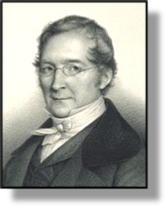 xxxxxIn 1805 the French physicist and chemist Joseph Gay-Lussac (1778-1850), went on an expedition with Alexander von Humboldt to measure terrestrial magnetism, and a year later they worked together to determine the relative proportions in which hydrogen and oxygen combine to form water. They became acquainted as members of the “Arcueil circle”, a group of young scientists who, under the auspices of the French chemist Claude Berthollet, met regularly at his country house in Arcueil, a suburb of Paris.
xxxxxIn 1805 the French physicist and chemist Joseph Gay-Lussac (1778-1850), went on an expedition with Alexander von Humboldt to measure terrestrial magnetism, and a year later they worked together to determine the relative proportions in which hydrogen and oxygen combine to form water. They became acquainted as members of the “Arcueil circle”, a group of young scientists who, under the auspices of the French chemist Claude Berthollet, met regularly at his country house in Arcueil, a suburb of Paris.
xxxxxGay-Lussac was born at Saint-Léonard-de-Noblat, near Limoges and, after studying at the École Polytechnique, Paris, became an assistant to the French chemist Claude Berthollet in 1801. It was while in his employ that, in 1804, he made two balloon ascents to study changing weather conditions. Inxthe first, accompanied by Jean-Baptiste Biot (1774-1862) - the French physicist who established the reality of meteorites - he went to a height of some 13,000 feet to measure the affect of altitude upon 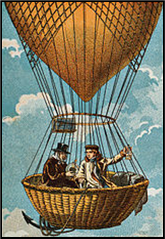 the Earth’s magnetic intensity. In the second, traveling alone, he went up to a height of just over 23,000 feet - an altitude record that stood for half a century - and, in addition to making magnetic readings, took air samples and measured the variations in temperature and air pressure at different heights. He concluded from his findings that both the Earth’s magnetic intensity and the chemical make-up of the atmosphere remained constant up to the altitude reached during his experiments. In 1808 this and other research earned him the chair of physics at the Sorbonne, a post he held until 1832. In this capacity he was obliged to fulfill a number of advisory appointments, including supervision of a gunpowder factory in 1818, and chief assayer to the Mint in 1829.
the Earth’s magnetic intensity. In the second, traveling alone, he went up to a height of just over 23,000 feet - an altitude record that stood for half a century - and, in addition to making magnetic readings, took air samples and measured the variations in temperature and air pressure at different heights. He concluded from his findings that both the Earth’s magnetic intensity and the chemical make-up of the atmosphere remained constant up to the altitude reached during his experiments. In 1808 this and other research earned him the chair of physics at the Sorbonne, a post he held until 1832. In this capacity he was obliged to fulfill a number of advisory appointments, including supervision of a gunpowder factory in 1818, and chief assayer to the Mint in 1829.
xxxxxIt was in December of 1808 that he formulated the law of gases that still bears his name. Gay-Lussac’s law of combining volumes states that all gases expand by equal amounts when subjected to equal increments in temperature. In other words, if a gas is held at a constant pressure the volume is directly proportional to the absolute temperature. Inxhis chemical research he found new methods of producing oxalic and sulphuric acid and, assisted in many instances by his friend the French chemist Louis Thénard (1777-1857), he studied the properties of potassium, chlorine and iodine, and, in 1808, isolated the element boron. Both iodin and boron were so named by Gay-Lussac, the former after the violet colour of its vapour.
xxxxxAfter leaving the Sorbonne he was appointed professor of chemistry at the National Museum of Natural History in Paris. Apart from his outstanding contribution in both physical and inorganic chemistry, he served as a member of the Chamber of Deputies from 1831 and, eight years later, was elected to the Senate and made a peer by the French King Louis-Philippe.
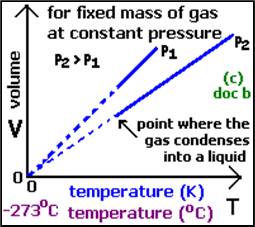
xxxxxIncidentally, Gay-Lussac’s law is sometimes referred to as Charles’s Law. In 1787 the French physicist Jacques Charles (the man who made the first ascent by a hydrogen-filled balloon), working on the relationship between the temperature and volume of a gas, concluded that the volume occupied by a fixed amount of gas is directly proportional to its absolute temperature, provided the pressure remains constant. He shared this finding with Gay-Lussac who made his own experiments, confirmed the results, and published a similar equation - hence the two names for the one law. ……
xxxxx…… Itxwasxbased on Gay Lussac’s law of gases that, two years later in 1811, the Italian physicist Amedeo Avogadro (1776-1856) deduced that given the same temperature and pressure, equal volumes of different gases contain an equal number of particles, either individual atoms or molecules - the term he used to describe combinations of atoms. Unfortunately, this theory - now known as Avogadro’s Law - was not generally accepted until the late 1850s.
xxxxxIn 1805 the French physicist and chemist Joseph Gay-Lussac (1778-1850) worked with Humboldt in measuring terrestrial magnetism and, a year later, they determined the proportions of hydrogen and oxygen in the composition of water. As an assistant to the French chemist Claude Berthollet, he made two balloon ascents to measure temperature, air pressure and magnetic intensity at different heights. He is remembered today, however, for his law concerning the relationship between the temperature and volume of a gas, formulated in 1808 and still bearing his name. As a chemist he found new methods of producing oxalic and sulphuric acid, studied the properties of potassium, chlorine and iodine, and, in 1808, isolated the element boron. In all, he made an outstanding contribution in both physical and inorganic chemistry.
G3c-1802-1820-G3c-1802-1820-G3c-1802-1820-G3c-1802-1820-G3c-1802-1820-G3c
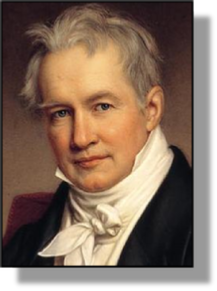 xxxxxItxwas in 1804, together with the French botanist Aimé Bonpland, that the German explorer and scientist Alexander von Humboldt returned from a five year exploration of the regions of the Orinoco and Amazon rivers in South America. They came back with no less than 60,000 plant specimens, and a vast amount of scientific data. A brilliant field observer and a man of many interests - including geography, geology, meteorology, astronomy and botany - he did much to widen public interest in the sciences, and is seen as one of the founders of both geography and meteorology as specialized branches of science.
xxxxxItxwas in 1804, together with the French botanist Aimé Bonpland, that the German explorer and scientist Alexander von Humboldt returned from a five year exploration of the regions of the Orinoco and Amazon rivers in South America. They came back with no less than 60,000 plant specimens, and a vast amount of scientific data. A brilliant field observer and a man of many interests - including geography, geology, meteorology, astronomy and botany - he did much to widen public interest in the sciences, and is seen as one of the founders of both geography and meteorology as specialized branches of science.
xxxxxHumboldt was born in Berlin, and after a private education attended Gottingen University. It was around this time, 1789, that he met the German explorer and scientist Georg Forster who, with his father, had accompanied Captain Cook on his second round-the-world voyage. This intensified his interest in exploration, and over the next few years he made botany expeditions to England, Switzerland and Italy. In 1792, after attending the school of mines at Freiburg, he was appointed a government inspector of mines in the remote Fichtel Mountains of Bavaria. Here he gained a reputation for hard work, but privately he continued his interest in botany. Then In 1796, following his mother’s death, he inherited a large sum of money, and this set him on his travels. He left Marseille for the Spanish colonial lands of South America in the summer of 1799, accompanied by Aimé Bonpland, whom he had met in Paris.
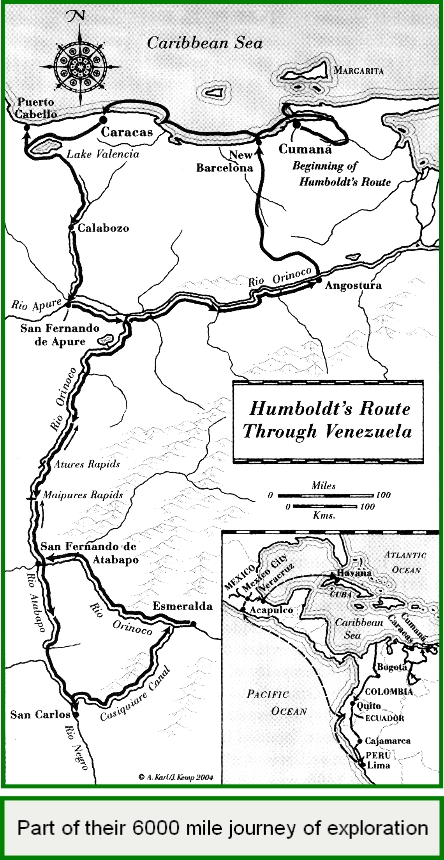 xxxxxOver the next five years their hazardous 6,000 mile journey, covered on foot, or by horseback and canoe, took them through present-day Colombia, Ecuador, Peru and Mexico, and included the exploration of almost the entire length of the Orinoco River and part of the upper Amazon. This diverse mixture of terrain and climate allowed them to gather an extraordinary amount of data not only on flora, fauna and minerals, but also on physical geography, geology, astronomy, meteorology, and terrestrial magnetism - a subject of particular interest to Humboldt. In 1802 he climbed the Andean inactive volcano of Chimborazo (illustrated below), setting a new altitude record at 18,893ft (just short of the summit), and then went on to plumb the ocean, measuring the temperature of the waters off the west coast of South America and monitoring the upsurge of cold water from the depths below. (This upwelling was later named the Humboldt Current but is known today as the Peru Current.) During this extraordinary expedition they also mapped out much of the area covered, and showed an interest in the history, language and customs of the different peoples they met.
xxxxxOver the next five years their hazardous 6,000 mile journey, covered on foot, or by horseback and canoe, took them through present-day Colombia, Ecuador, Peru and Mexico, and included the exploration of almost the entire length of the Orinoco River and part of the upper Amazon. This diverse mixture of terrain and climate allowed them to gather an extraordinary amount of data not only on flora, fauna and minerals, but also on physical geography, geology, astronomy, meteorology, and terrestrial magnetism - a subject of particular interest to Humboldt. In 1802 he climbed the Andean inactive volcano of Chimborazo (illustrated below), setting a new altitude record at 18,893ft (just short of the summit), and then went on to plumb the ocean, measuring the temperature of the waters off the west coast of South America and monitoring the upsurge of cold water from the depths below. (This upwelling was later named the Humboldt Current but is known today as the Peru Current.) During this extraordinary expedition they also mapped out much of the area covered, and showed an interest in the history, language and customs of the different peoples they met.
xxxxxHumboldt returned to Europe via the United States - where he met President Thomas Jefferson - and settled in Paris in 1804. Here, widely acclaimed, he mixed with the social and scientific elite and, as some would have it, became (after Napoleon), the best known man in Europe. It was in these early days that, as a member of a group of young scientists known as the Arcueil Circle, he met and, as we shall see, collaborated with the French chemist Joseph Louis Gay-Lussac. He remained in Paris for over twenty years during which time he published 23 of his 30 volume epic Voyage de Humboldt et Bonpland aux régions équinoxials du nouveau continent, a work giving a detailed account of his expedition to South and Central America and the many findings that were made. From 1827 he spent some time in Berlin as a tutor to the crown prince, but two years later, at the invitation of Tsar Nicholas and accompanied by the German naturalist Christian Ehrenberg, he made a geological study of the Ural Mountains, examining the beds which produced gold and platinum, and discovering the presence of diamonds.
 xxxxxOn his return to Berlin he spent much of the remainder of his life writing up his masterpiece, Kosmos (The Cosmos), aimed at describing the whole structure of the physical world, and regarded today as the first textbook of geophysics. Four volumes were published in his life time, and each dealt with different aspects of the subject. The fifth, based on his notes, was produced after his death. In them he attempted to show that the universe was an organic whole with its own laws and conditions and with all aspects of its make-up interdependent. Thus there was a relationship between basic physical causes - such as rotation and magnetism - and the earth’s distribution of flora and fauna. Written in a pleasant and, for the most part, comprehensible style, this ambitious project - nothing less than a comprehensive study of current scientific knowledge - proved extremely popular and, within a few years, had been translated into most European languages.
xxxxxOn his return to Berlin he spent much of the remainder of his life writing up his masterpiece, Kosmos (The Cosmos), aimed at describing the whole structure of the physical world, and regarded today as the first textbook of geophysics. Four volumes were published in his life time, and each dealt with different aspects of the subject. The fifth, based on his notes, was produced after his death. In them he attempted to show that the universe was an organic whole with its own laws and conditions and with all aspects of its make-up interdependent. Thus there was a relationship between basic physical causes - such as rotation and magnetism - and the earth’s distribution of flora and fauna. Written in a pleasant and, for the most part, comprehensible style, this ambitious project - nothing less than a comprehensive study of current scientific knowledge - proved extremely popular and, within a few years, had been translated into most European languages.
xxxxxHumboldt himself made contributions to this fund of scientific knowledge across a wide range of disciplines. Following his study of the Andean volcanoes, for example, he concluded that they were due to underlying geological faults, and argued from this that eruptive forces must have played a major role in the development of the earth’s crust. And he was one of the first to link by comparative study the relationship between geographical regions and the presence of flora, fauna and mineral content.
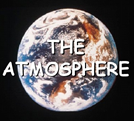 xxxxxHe was also deeply interested in meteorology, and it is to him that we owe the introduction of isobars and isotherms in the displaying of weather conditions. It was in the furtherance of this interest that he prevailed upon the Russian government and the British government - through the Royal Society - to set up a network of stations across their empires so as to provide magnetic and weather recordings, such as temperature and air pressure, around the world. The data received from this international cooperation - the first of its kind - not only served to compile a global weather picture but, at a later date, the magnetic observations helped to establish the origin of “magnetic storms” - found to be related to the activity of sun spots. And in this field of terrestrial magnetism he had concluded as early as 1804 that the Earth’s magnetic field decreased from the poles to the equator.
xxxxxHe was also deeply interested in meteorology, and it is to him that we owe the introduction of isobars and isotherms in the displaying of weather conditions. It was in the furtherance of this interest that he prevailed upon the Russian government and the British government - through the Royal Society - to set up a network of stations across their empires so as to provide magnetic and weather recordings, such as temperature and air pressure, around the world. The data received from this international cooperation - the first of its kind - not only served to compile a global weather picture but, at a later date, the magnetic observations helped to establish the origin of “magnetic storms” - found to be related to the activity of sun spots. And in this field of terrestrial magnetism he had concluded as early as 1804 that the Earth’s magnetic field decreased from the poles to the equator.
xxxxxHumboldt lived until the age of ninety, and did much to popularize science throughout his long life. A generous, gregarious person by nature, he had an affection and admiration for the common man and, in his writings, came out strongly against slavery. The vast amount of correspondence that he left, some 8,000 letters in all, testify to the width of his interests, his inquiring mind, and the esteem in which he was held.
xxxxxIncidentally, although Humboldt and Bonpland explored much of the upper reaches of the Orinoco River, its source was not actually discovered until a Venezuelan expedition explored the region in 1951. ……
xxxxx…… As noted earlier, it was Humboldt who, while working in a private library in Paris, discovered a map by Juan de la Cosa. The Spanish cartographer produced the map in 1500 to show discoveries made by Columbus, Vasco da Gama and Cabot, and it was the first to include the new continent. It was lost soon afterwards and remained so for some 300 years! ……
xxxxx…… While supervising the working of the mines in the Fitchtel Mountains in the 1790s he invented a safety lamp, some twenty years before the English chemist Humphrey Davy produced his own, better-known version.
xxxxxLike Alexander von Humboldt before him, the German biologist Adelbert von Chamisso (1781-1838) collected a large number of plant specimens during a scientific expedition around the world from 1815 to 1818. On his return he became curator of Berlin’s botanical gardens. Chamisso was also a talented zoologist, wrote books on botany, and produced poems, some of which were put to music by the German composer Robert Schumann. However, as we shall see when discussing the German writer Goethe in 1808, he is best remembered today for his bizarre tale entitled Peter Schlemihl’s Remarkable Story, a Faust-like fantasy about a man who sold his shadow to the devil.
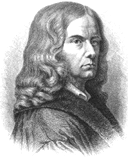 xxxxxAnother naturalist at this time who, like Alexander von Humboldt, collected a large number of plant specimens, was the French-born German biologist and writer Adelbert von Chamisso (1781-1838). His family having fled from the horrors of the French revolution in 1790, he was brought up in Berlin, and served for a time in the Prussian army. In 1815, as the ship’s botanist aboard the Rurik, a Russian vessel, he took part in a scientific expedition around the world. He kept a detailed log of the entire voyage and made notes on many new species of plants. His diary of this venture was published in 1836 under the title Voyage Around the World with the Romanzov Discovery Expedition. He was appointed curator of the Berlin’s botanical gardens in 1819.
xxxxxAnother naturalist at this time who, like Alexander von Humboldt, collected a large number of plant specimens, was the French-born German biologist and writer Adelbert von Chamisso (1781-1838). His family having fled from the horrors of the French revolution in 1790, he was brought up in Berlin, and served for a time in the Prussian army. In 1815, as the ship’s botanist aboard the Rurik, a Russian vessel, he took part in a scientific expedition around the world. He kept a detailed log of the entire voyage and made notes on many new species of plants. His diary of this venture was published in 1836 under the title Voyage Around the World with the Romanzov Discovery Expedition. He was appointed curator of the Berlin’s botanical gardens in 1819.
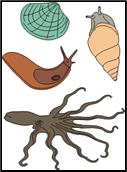 xxxxxChamisso was also a keen zoologist and made a special study of molluscs. In addition, he published books on biology, and produced poems, some of which - the cycle Woman’s Love and Life - were put to music by the German composer Robert Schumann. Today, however, as we shall see when studying the German writer Goethe in 1808, he is remembered as the author of the bizarre tale entitled Peter Schlemihl’s Remarkable Story. This is a prose, Faust-like fantasy about a man who sells his shadow to the devil.
xxxxxChamisso was also a keen zoologist and made a special study of molluscs. In addition, he published books on biology, and produced poems, some of which - the cycle Woman’s Love and Life - were put to music by the German composer Robert Schumann. Today, however, as we shall see when studying the German writer Goethe in 1808, he is remembered as the author of the bizarre tale entitled Peter Schlemihl’s Remarkable Story. This is a prose, Faust-like fantasy about a man who sells his shadow to the devil.







 xxxxxIn 1805 the French physicist and chemist Joseph Gay-
xxxxxIn 1805 the French physicist and chemist Joseph Gay- the Earth’s magnetic intensity. In the second, traveling alone, he went up to a height of just over 23,000 feet -
the Earth’s magnetic intensity. In the second, traveling alone, he went up to a height of just over 23,000 feet -
 xxxxxItxwas in 1804, together with the French botanist Aimé Bonpland, that the German explorer and scientist Alexander von Humboldt returned from a five year exploration of the regions of the Orinoco and Amazon rivers in South America. They came back with no less than 60,000 plant specimens, and a vast amount of scientific data. A brilliant field observer and a man of many interests -
xxxxxItxwas in 1804, together with the French botanist Aimé Bonpland, that the German explorer and scientist Alexander von Humboldt returned from a five year exploration of the regions of the Orinoco and Amazon rivers in South America. They came back with no less than 60,000 plant specimens, and a vast amount of scientific data. A brilliant field observer and a man of many interests - xxxxxOver the next five years their hazardous 6,000 mile journey, covered on foot, or by horseback and canoe, took them through present-
xxxxxOver the next five years their hazardous 6,000 mile journey, covered on foot, or by horseback and canoe, took them through present- xxxxxOn his return to Berlin he spent much of the remainder of his life writing up his masterpiece, Kosmos (The Cosmos), aimed at describing the whole structure of the physical world, and regarded today as the first textbook of geophysics. Four volumes were published in his life time, and each dealt with different aspects of the subject. The fifth, based on his notes, was produced after his death. In them he attempted to show that the universe was an organic whole with its own laws and conditions and with all aspects of its make-
xxxxxOn his return to Berlin he spent much of the remainder of his life writing up his masterpiece, Kosmos (The Cosmos), aimed at describing the whole structure of the physical world, and regarded today as the first textbook of geophysics. Four volumes were published in his life time, and each dealt with different aspects of the subject. The fifth, based on his notes, was produced after his death. In them he attempted to show that the universe was an organic whole with its own laws and conditions and with all aspects of its make- xxxxxHe was also deeply interested in meteorology, and it is to him that we owe the introduction of isobars and isotherms in the displaying of weather conditions. It was in the furtherance of this interest that he prevailed upon the Russian government and the British government -
xxxxxHe was also deeply interested in meteorology, and it is to him that we owe the introduction of isobars and isotherms in the displaying of weather conditions. It was in the furtherance of this interest that he prevailed upon the Russian government and the British government - xxxxxAnother naturalist at this time who, like Alexander von Humboldt, collected a large number of plant specimens, was the French-
xxxxxAnother naturalist at this time who, like Alexander von Humboldt, collected a large number of plant specimens, was the French- xxxxxChamisso was also a keen zoologist and made a special study of molluscs. In addition, he published books on biology, and produced poems, some of which -
xxxxxChamisso was also a keen zoologist and made a special study of molluscs. In addition, he published books on biology, and produced poems, some of which -

